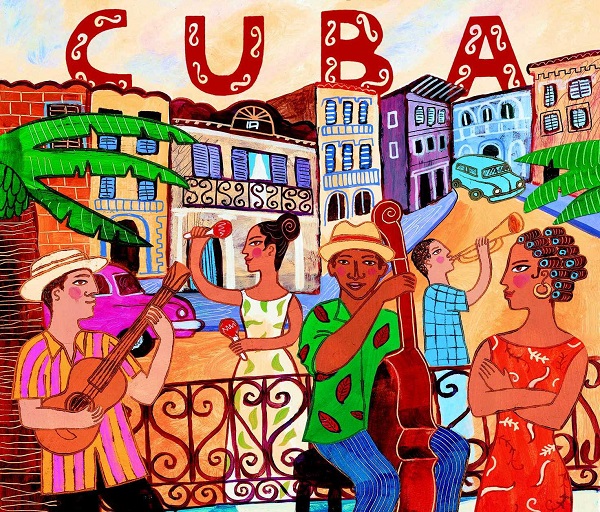12.14.14 Descemer Bueno

Descemer Bueno is an important and popular Cuban composer, singer, double bassist, and percussionist. He was born in 1971 in the municipality of Old Havana, Havana. He studied guitar at the Manuel Saumell Conservatories (660 F Street, Vedado, Havana City) and Amadeo Roldán Conservatories (Rastro No. 1 and Espada, Centro Habana, Havana).
In 1990, he formed Estado de Ánimo, a jazz combo with Elmer Ferrer and Roberto Carcasés, achieving great success during several concerts in countries such as Spain, Bolivia, Uruguay, Germany, and Argentina. Later, in 1998, he left for the United States and joined the jazz ensemble Columna B, performing not only jazz but all types of instrumental music. On a tour of New York City, he shared the stage with musicians of the caliber of saxophonist Steve Coleman. Later, he joined Grupo Fula, based in Barcelona, Spain.
Descemer Bueno was living at Stanford University in California around this time, and soon moved to South Africa to teach for a year at Cape Town University. In 1999, he left New York and became a driving force behind his hip-hop group Yerba Buena, writing or co-writing most of the compositions on their debut album, President Alien.
Descemer has worked with Carlos Varela, Boris Larramendi, Santiago Feliú, Roberto Carcassés, X Alfonso, Elmer Ferrer and Ruy López-Nussa. He has collaborated on diverse albums such as “Falange Caníbal” (which won a Latin Grammy for Best Brazilian Pop Album) with Lenine; “Náuseas de un siglo” and “Futuro inmediato” by Santiago Feliú, Cuba; “Trampa del tiempo” by Pável and Gema, Spain; and “Jazz timbero” by Bobby Carcassés, Cuba. He has produced, arranged and composed for many young Cuban musicians such as Haydée Milanés, William Vivanco, Yusa and Diana Fuentes.
In 2005, he released his debut solo album, Siete Rayo, a hip-hop fusion album released on the Universal Latin label. He collaborated on this work with guitarist George Pajon of the Black Eyed Peas. The following year, Descemer won a Goya Award for his soundtrack to the film Habana Blues by Spanish composer Benito Zambrano.
Together with singer Kelvis Ochoa, he released the album “Amor y Música” in 2007 under the EGREM label. A year later, with the same Cuban label, his album “Sé feliz” (Be Happy) was released, featuring twelve boleros of his own compositions, including “Palabras de amor” (Words of Love), “Siempre seré” (I Will Always Be), “No te vayas” (Don’t Go), and the title track. It is an album of boleros composed by him and performed by the renowned bolero singer Fernando Álvarez.
His most notable works include: “Old Love”; “Beauty”; “Breath March”; “Breathe (with Ahmed Barroso)”; “Caimanera”; “Calipso” (with Pável Urquiza); “Cariño”; “Blind Love”; “Cimarrón” (with Ahmed Barroso); “Like a Dove”; “Cumbia Reggae”; “From Here to There”; “From New York to Havana” (with Pável Urquiza); “Tell Me” (with Ahmed Barroso); “Tell Me Yes in Yes”; “Where the Words Go” (with Vinicius Cantuaria); “The Car”; “The Day Has a Few Extra Hours” (with Pável Urquiza); “Be Happy”; “Tell Me Yes in Yes” and “When I Fall in Love”.
With the song “Cuando me enamoro,” Descemer shared his experiences with musicians Enrique Iglesias (Spanish) and Juan Luis Guerra (Dominican), who recorded this song that tested friendship and different realities. The hit song spent 18 weeks at number one and garnered eight Billboard Award nominations and one Latin Grammy nomination for Song of the Year.
In 2010, Descemer Bueno, Kelvis Ochoa, and other musicians joined forces for Haiti at a humanitarian concert in the Dominican Republic. That same year, he also produced some songs for the album Euphoria by Spanish singer Enrique Iglesias.
In 2011, he worked on the soundtrack of Puerto Rican Benicio del Toro’s directorial debut, Seven Days in Havana, with Kelvis Ochoa.
Among Descemer Bueno’s accolades is the American Society of Composers, Authors and Publishers (ASCAP) award. He is thus a musician destined to become a landmark in Cuban music; an exponent of an urban sound with a vibrant, contemporary vibe.








